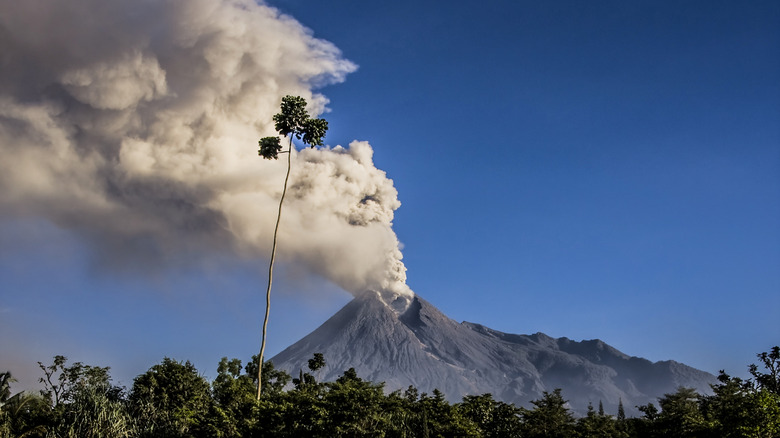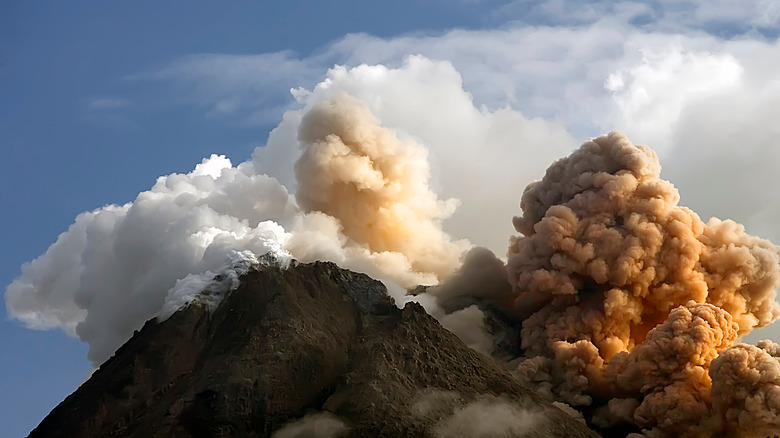This Indonesian Volcano Is One Of The Most Dangerous Places On Earth
Situated in the center of Indonesia's Java Island sits the towering Mount Merapi (above), which stretches 9,511 feet in the air (via Britannica). Oozing with clouds of superheated gas and pyroclastic flows, Mount Merapi is not only the most active of all the region's active volcanoes, it is also one of the most dangerous places on Earth (via Illinois News Bureau).
The name Mount Merapi literally translates to "Mountain of Fire." Said fire has already erupted on multiple occasions, killing crowds of people in its path. While its past is certainly scathing enough, it is the possible future of Mount Merapi that has many scientists on edge.
In a 2006 interview with Illinois News Bureau's physical sciences editor Jim Kloeppel, volcanologist and geology professor Susan W. Kieffer discussed the multitude of reasons this stratovolcano poses such a drastic, ongoing threat — from gas-charged eruptions, fatal mudflows, to the ability to melt glaciers into puddles.
Merapi's gas-charged eruptions are more dangerous than the average volcanic explosion
To an untrained eye, the photo above — a classic eruption of this infamous Indonesian volcano — might look like any other explosion where a mountain spews hot lava and billowing smoke. However, volcanologist Susan W. Kieffer points out the distinction, stating, "the magma in stratovolcanoes is charged with gas. As a result, when such magma finds a conduit to the surface, it can build up a sticky, hot, gas-rich plug known as a volcanic dome" (via Illinois News Bureau).
This volcanic dome can continue growing until it is quite large. But, like the volcano itself, the dome will eventually erupt. According to the Smithsonian Institution's National Museum of Natural History, two such domes formed in Mount Merapi last year. When the dome erupts, dome fragments combined with hot gas and molten ash can take out entire cities, villages, and towns, inciting mudflows that boil like lava, and even melting glaciers in its wake. To make matters worse, massive regional earthquakes and other disasters have increased Mount Merapi's volcanic activity and forced its lava dome to swell. At some point in the future, the swelling dome will inevitably collapse, and given the current circumstances, the power of that eruption could be devastating.

